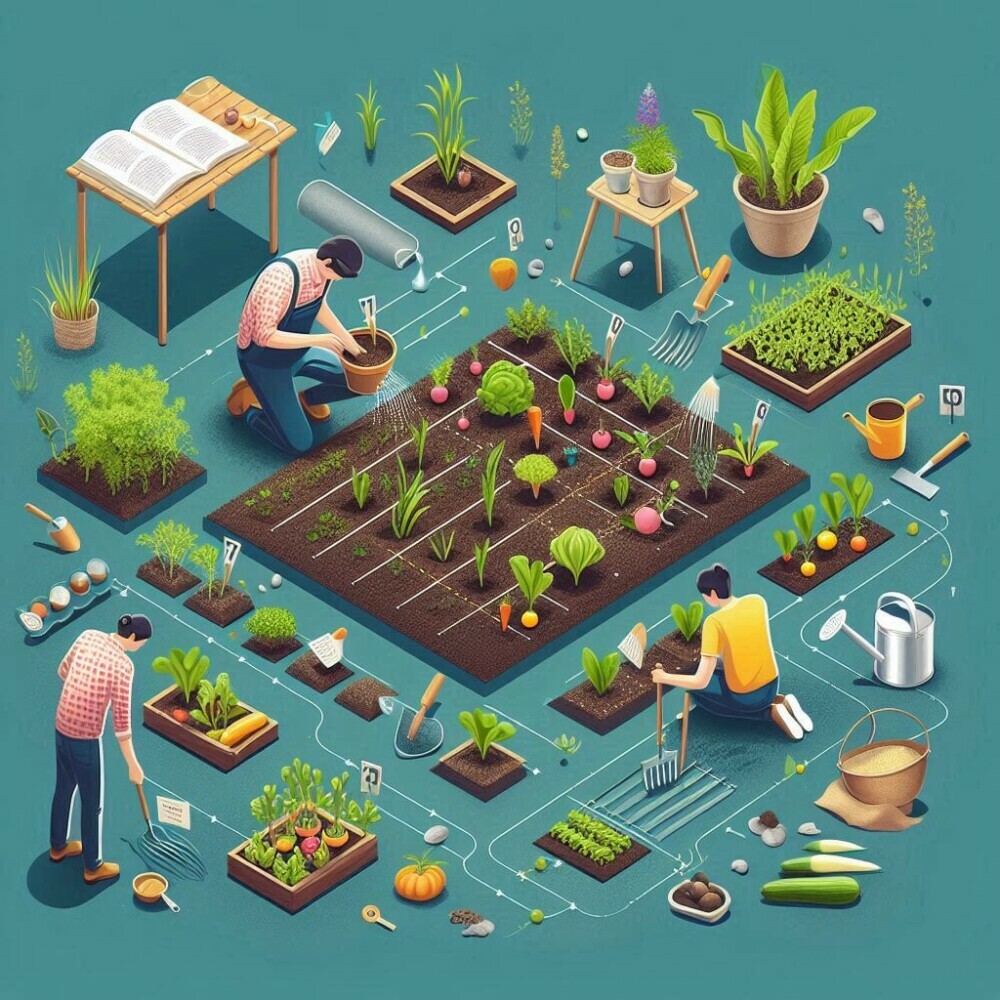
I will walk you through an exciting journey – starting a vegetable garden from scratch. The buzz around home-grown veggies has skyrocketed, and for good reason. Not only is it a rewarding hobby, but it also ensures you have fresh, organic produce right at your doorstep.
If you’re considering rolling up your sleeves and digging into gardening, you’ll need to appreciate both the commitment required and the rewards of nurturing your plants. This isn’t just about saving money on groceries; it’s also about immersing yourself in nature, improving your diet, and potentially, your mental well-being.
You might have noticed more people are turning to their backyards for food. This trend towards self-sufficiency has gained momentum, mainly as we aim for healthier eating habits and a smaller carbon footprint. And guess what? You can join whether you have a sprawling yard or a small balcony space.
So, choose something that resonates with you – there’s a vegetable for every taste and spot. And don’t worry too much about perfecting it on the first try. Gardening is all about learning and adapting. You’ll gain the confidence to expand your garden over time.
Planning Your Garden: Laying the Groundwork
So, you’re excited about growing your food. Great! I will walk you through some critical steps to turn that excitement into a flourishing vegetable garden. Now, choosing the right location for your garden is pretty huge. It would be best to have a spot with plenty of sunlight because those veggies will thrive on it. Aim for about six to eight hours of direct sunshine a day.
Beyond the sun, let’s talk soil because not all dirt is equal. You’ll want well-draining soil that’s rich in organic matter. If you’re dealing with heavy clay or sand, don’t worry too much about it. You can continually improve your soil with compost and other amendments.
Now, to pick your players, or in this case, vegetables. Go for types famous for being straightforward and productive—think tomatoes, cucumbers, and peppers. But here’s the twist: You’ve got to consider not just what you like to eat but also what will work with your local climate and the current season.
Last on this part of the list is setting up your stage. Grab some stakes and string to outline your beds or mark off sections if you’re going for a patchwork garden. This will give you a visual guide and make it easier to organize the space. Plus, it’s essential to start gathering your garden tools now to have everything on hand when you’re ready to plant.
Planting Your Vegetables: A Step-By-Step Guide
I will walk you through the exciting phase of planting your vegetables. This crucial step is where you’ll see your plan come alive. You’ll learn about the best times to plant, how to prepare your soil, and the tricks to sowing seeds and using young plants.
Timing is everything when it comes to planting. If you want to give your veggies the best start, pay close attention to the frost dates in your region. Some vegetables, like peas and spinach, can handle a chill, while others, such as tomatoes and peppers, prefer the warmth.
Soil is the foundation of your garden’s health. You’ll want to work in compost or a balanced fertilizer to enrich it with nutrients. Tilling the soil is an excellent practice to help aerate it and work on the amendments.
When it’s time to plant, you have two routes: sowing seeds directly into the garden or transplanting young plants you’ve started indoors or purchased. Each method has advantages; your choice might depend on the plant type and climate.
Here’s a tip: Follow the spacing guidelines on seed packets or plant tags. These guidelines are not just suggestions; they ensure your plants have room to grow and receive adequate sunlight and airflow, which helps prevent disease.
After planting, give your garden good water. This settles the soil around the seeds or plants and helps to kickstart the growing process. Remember not to overdo it; soggy soil can trouble young plants.
Maintaining Your Garden: Caring for Your Growing Plants
You’ve laid the groundwork and planted your seeds or seedlings with care, and now it’s all about maintaining the momentum to see your vegetable garden thrive. This is a part of the journey that’s both rewarding and critical for success.
Let’s start with watering. This isn’t just about keeping the plants alive; it’s about fostering a healthy environment where your vegetables can flourish. You can constantly adjust your approach, but initially, aim for consistency. A general rule is to water deeply and infrequently, promoting robust root development.
Now, what about those unwelcome garden visitors? I’m talking about weeds. Don’t worry too much about a few intruders, but if you want to keep your garden healthy, you’ll need to get on top of weed control. Mulching and regular inspection are your allies here.
Pests can be accurate, but I’m here to help you with organic and sustainable pest management strategies. You don’t have to reach for harsh chemicals; natural remedies and preventative measures like companion planting offer many opportunities.
Finally, let’s talk about the joy of harvesting. Knowing the right time to harvest each type of vegetable is essential for peak flavor and texture. This is where all your hard work pays off, so enjoy the fruits (or vegetables) of your labor and revel in the accomplishment of growing your food.
In the end, remember that your vegetable garden is a living, breathing space that will grow and change with each season. Your first attempt doesn’t need to be your last. Learning and adapting are part of the fun; each year, you’ll discover new challenges and joys of gardening. I hope you’ve found this guide helpful and that your vegetable garden becomes a source of pride and pleasure for many seasons.

